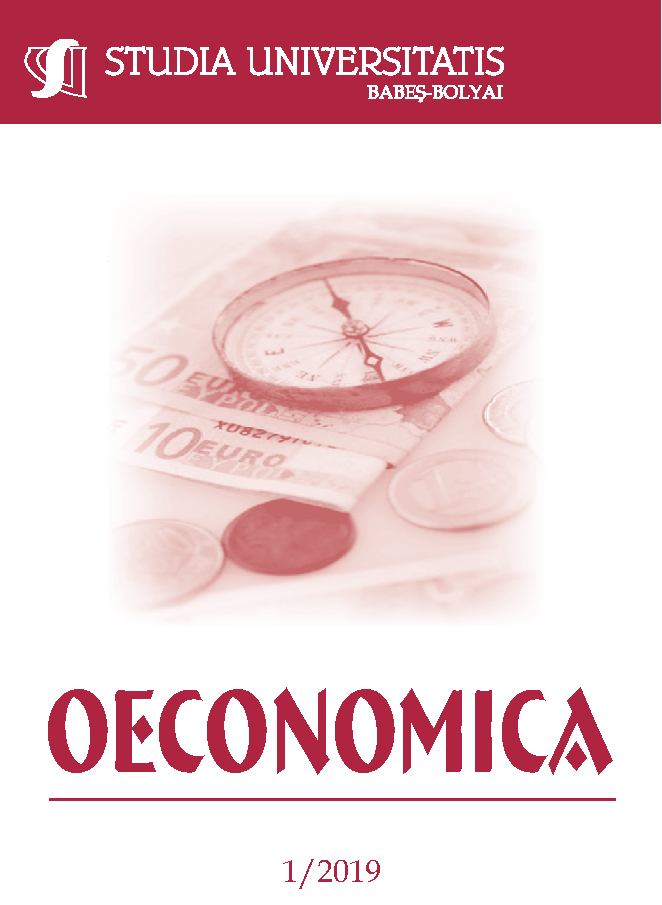IDENTIFYING KEY FRAUD INDICATORS IN THE AUTOMOBILE INSURANCE INDUSTRY USING SQL SERVER ANALYSIS SERVICES
DOI:
https://doi.org/10.2478/subboec-2019-0009Keywords:
automobile insurance, insurance fraud, fraud indicators, data mining.Abstract
Customer segmentation represents a true challenge in the automobile insurance industry, as datasets are large, multidimensional, unbalanced and it also requires a unique price determination based on the risk profile of the customer. Furthermore, the price determination of an insurance policy or the validity of the compensation claim, in most cases must be an instant decision. Therefore, the purpose of this research is to identify an easily usable data mining tool that is capable to identify key automobile insurance fraud indicators, facilitating the segmentation. In addition, the methods used by the tool, should be based primarily on numerical and categorical variables, as there is no well-functioning text mining tool for Central Eastern European languages. Hence, we decided on the SQL Server Analysis Services (SSAS) tool and to compare the performance of the decision tree, neural network and Naïve Bayes methods. The results suggest that decision tree and neural network are more suitable than Naïve Bayes, however the best conclusion can be drawn if we use the decision tree and neural network together.
JEL classification: C49, C88, G22, K42;
References
Abdallah A., Maarof M.A., Zainal A. (2016) Fraud detection system: A survey, Journal of Network and Computer Applications, 68, 90-113.
Balakrishnan P., Kumar S., Han P. (2011) Dual objective segmentation to improve targetability: An evolutionary algorithm approach, Decision Sciences, 42(4), 831-857.
Bermúdez L., Pérez J.M., Ayuso M., Gómez E., Vázquez F.J. (2008) A Bayesian dichotomous model with asymmetric link for fraud in insurance, Insurance: Mathematics and Economics, 42(2), 779-786.
Bodon F., (2010) Adatbányászati algoritmusok, [Online] Available at: www.cs.bme.hu/~bodon/magyar/adatbanyaszat/tanulmany/adatbanyaszat.pdf [Accessed 06 01 2019].
Dowling G.R., Midgley, D.F. (1988) Identifying the coarse and fine structures of market segments, Decision Sciences, 19(4), 830-847.
Fan B., Zhang P. (2009) Spatially enabled customer segmentation using a data classification method with uncertain predicates, Decision Support Systems, 47(4), 343-353.
Frank R.E., Strain C.E., (1972) A segmentation research design using consumer panel data, Journal of Marketing Research, 385-390.
Han S., Ye Y., Fu X., Chen Z. (2014) Category role aided market segmentation approach to convenience store chain category management, Decision Support Systems, 57 296-308.
Green P.E., (1977) A new approach to market segmentation, Business Horizons, 20(1), 61-73.
Hassan A.K.I., Abraham A. (2016) Modeling insurance fraud detection using imbalanced data classification, Cham, Springer, 117-127.
Holsheimer M., Siebess A. (1996) Data mining: The search for knowledge in databases, Amsterdam: Centrum voor Wiskunde en Informatica.
Huerta-Munoz D.L., Rios-Mercado R.Z., Ruiz R. (2017) An iterated greedy heuristic for a market segmentation problem with multiple attributes, European Journal of Operational Research, 261(1), 75-87.
Kiang M.Y., Hu M.Y., Fisher D.M. (2006) An extended self-organizing map network for market segmentation - a telecommunication example, Decision Support Systems, 42(1), 36-47.
Kotler P., Armstrong G. (2010) Principles of marketing, Pearson Education.
Insurance Fraud Bureau, 2015. Cutting corners to get cheaper motor insurance backfiring on thousands of motorists warns the ABI. [Interactiv] Available at: https://www.insurancefraudbureau.org/media-centre/news/2015/cutting-corners-to-get-cheaper-motor-insurance-backfiring-on-thousands-of-motorists-warns-the-abi/ [Accesat 01 09 2018].
Li Y., Yan C., Liu W., Li, M. (2018) A principle component analysis-based random forest with the potential nearest neighbor method for automobile insurance fraud identification, Applied Soft Computing, Volumul 70, 1000-1009.
Liu J., Liao X., Huang W., Liao X. (2019). Market segmentation: A multiple criteria approach combining preference analysis and segmentation decision, Omega, 83, 1-31
Liu Y., Ram S., Lusch R.F., Brusco M. (2010) Multicriterion market segmentation: a new model, implementation, and evaluation, Marketing Science, 29(5), 880-894.
Nian K., Zhang H., Tayal A., Coleman T., Li, Y. (2016) Auto insurance fraud detection using unsupervised spectral ranking for anomaly, The Journal of Finance and Data Science, 2(1), 58-75.
Pathak J., Vidyarthi N., Summers S.L. (2005) A fuzzy-based algorithm for auditors to detect elements of fraud in settled insurance claims, Managerial Auditing Journal, 20(6), 632-644.
Phua C., Alahakoon D., Lee, V. (2004) Minority report in fraud detection: classification of skewed data, Acm sigkdd explorations newsletter, 6(1), 50-59.
Pinquet J., Ayuso M., Guillén M. (2007) Selection bias and auditing policies for insurance claims, Journal of Risk and Insurance, 74(2), 425-440.
Šubelj L., Furlan Š., Bajec M., (2011) An expert system for detecting automobile insurance fraud using social network analysis, Expert Systems with Applications, 38(1), 1039-1052.
Sundarkumar G.G., Ravi V. (2015) A novel hybrid undersampling method for mining unbalanced datasets in banking and insurance, Engineering Applications of Artificial Intelligence, Volumul 37, 368-377.
Tao H., Zhixin L., Xiaodong S. (2012) Insurance fraud identification research based on fuzzy support vector machine with dual membership. s.l., IEEE, 457-460.
Tsafarakis S., Grigoroudis E., Matsatsinis N. (2008) Targeting the undecided customer, In Proceedings of the 37th EMAC Conference.
Wang Y., Xu W (2018). Leveraging deep learning with LDA-based text analytics to detect automobile insurance fraud, Decision Support Systems, Volumul 105, 87-95.
Wedel M., Kamakura W.A. (2012) Market segmentation: Conceptual and methodological foundations, volume 8. Springer Science and Business Media.
Wind Y. (1978) Issues and advances in segmentation research, Journal of marketing research, 317-337.
Xu W., Wang S., Zhang D., Yang, B. (2011) Random rough subspace based neural network ensemble for insurance fraud detection. s.l., IEEE, 1276-1280.
Downloads
Published
How to Cite
Issue
Section
License
Copyright (c) 2019 Studia Universitatis Babeș-Bolyai Oeconomica

This work is licensed under a Creative Commons Attribution-NonCommercial-NoDerivatives 4.0 International License.






